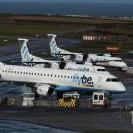-
Similar Content
-
- 0 replies
- 2749 views
-
staff-up [5th August 1800-2000z] Friday Night Fly-In - Kemble (EGBP) & Brize Norton (EGVN)
By Daniel Button,
- 0 replies
- 1369 views
-
staff-up [29th July 1800-2000z] Friday Night LARS Action - Boscombe Zone
By Daniel Button,
- 1 reply
- 1934 views
-
staff-up [15th July 1800-2100z] Friday Night Fly-In: RIAT Special - Fairford (EGVA), Kemble (EGBP) and Brize Norton (EGVN)
By Daniel Button,
- 3 replies
- 3494 views
-



Recommended Posts